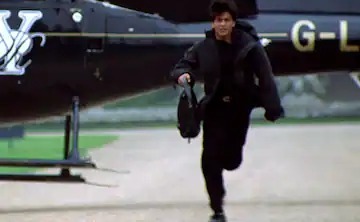In the realm of Indian cinema, few films have left as lasting an impression as Karan Johar’s “Kabhi Khushi Kabhie Gham” (K3G). Released in 2001, this family drama brought together an ensemble cast of Bollywood’s biggest stars, including Shah Rukh Khan, Amitabh Bachchan, Jaya Bachchan, Kajol, and Hrithik Roshan. The film, known for its opulence and emotional depth, became a cultural phenomenon, revered for its grand storytelling and memorable performances. Yet, behind the glitz and glamour, revelations about the film’s production continue to surface. One such insight comes from filmmaker Nikkhil Advani, who recently shared Shah Rukh Khan’s feelings regarding a particular scene—the helicopter entry. The helicopter entry scene is one of the film’s standout moments, showcasing Shah Rukh Khan’s character, Rahul, arriving in a lavish and dramatic manner. As the audience eagerly watches, the helicopter lands, symbolizing wealth, status, and the larger-than-life persona of Rahul. This moment is imbued with significance, representing not only Rahul’s affluent lifestyle but also his complex relationship with family and love. However, according to Nikkhil Advani, who was closely associated with the film’s production, Shah Rukh Khan had his reservations about this grand entry. He believed that the scene, while visually stunning, may not have resonated with the emotional gravitas that K3G aimed to convey. Nikkhil Advani shared that Shah Rukh Khan thought the helicopter entry might detract from the film’s emotional core. “He thought it was too over-the-top,” Advani recalled. This insight sheds light on the meticulous nature of Khan’s approach to his roles and the importance he places on character authenticity. As an actor renowned for his ability to embody complex emotions, Khan’s concern highlights a tension between spectacle and substance in filmmaking. Khan’s apprehension stemmed from his understanding of the film’s overarching themes—family, love, and the struggle between personal desires and familial obligations. He likely feared that the helicopter entry, with its extravagant flair, could overshadow the nuanced dynamics at play in the story. This reflects a common struggle in cinematic storytelling: balancing grand visuals with deep emotional resonance. The collaboration between directors, actors, and producers is crucial in the filmmaking process. Karan Johar, known for his signature style of combining melodrama with rich visual storytelling, had a different vision for the scene. The helicopter entry was intended to be a bold statement, encapsulating the film’s essence of wealth and luxury. Johar’s vision for K3G was one of grandeur, aiming to captivate audiences with its scale. Advani’s revelation about Khan’s disappointment emphasizes the importance of open communication in creative environments. It showcases how even the most experienced actors can have differing views on how best to portray a character or a scene. This collaborative tension can ultimately lead to a more refined final product, as the creative team navigates these discussions. Despite Shah Rukh Khan’s initial concerns, the helicopter entry scene became an iconic moment in Bollywood history. Audiences were captivated by the spectacle, which was consistent with the film’s overall tone. The grand entry aligned with K3G’s portrayal of wealth and familial pride, reinforcing the image of Rahul as a successful and charismatic figure. The film itself became a massive box office success, earning accolades for its production values, storytelling, and performances. The helicopter scene, while debated among the creative team, resonated with fans and contributed to the film’s larger-than-life aura. It’s a testament to how sometimes creative disagreements can lead to outcomes that align with audience expectations, even if they diverge from the initial artistic vision.
Shah Rukh Khan Was Disappointed With Helicopter Entry Scene In K3G, Reveals Nikkhil Advani: ‘He Thought…’

